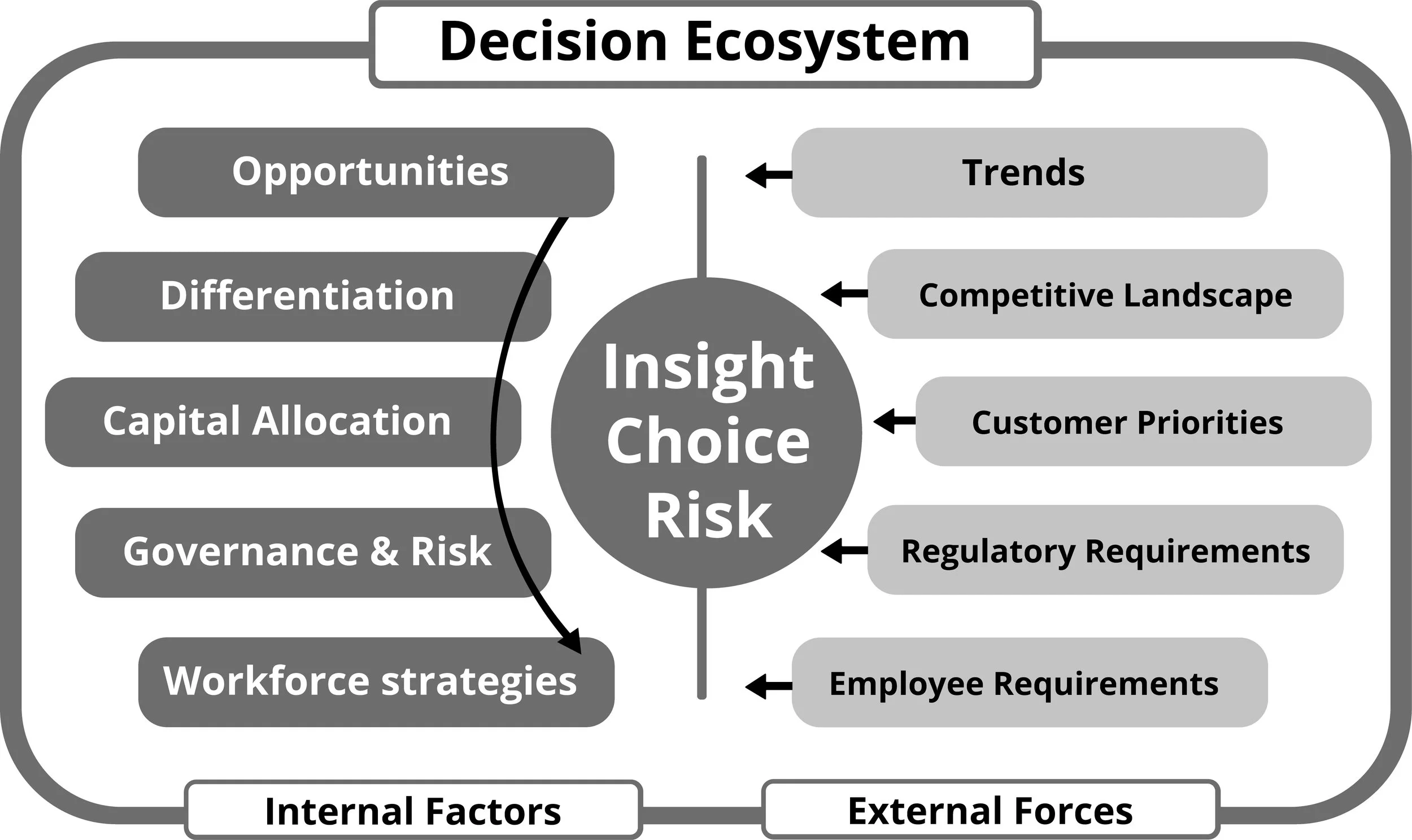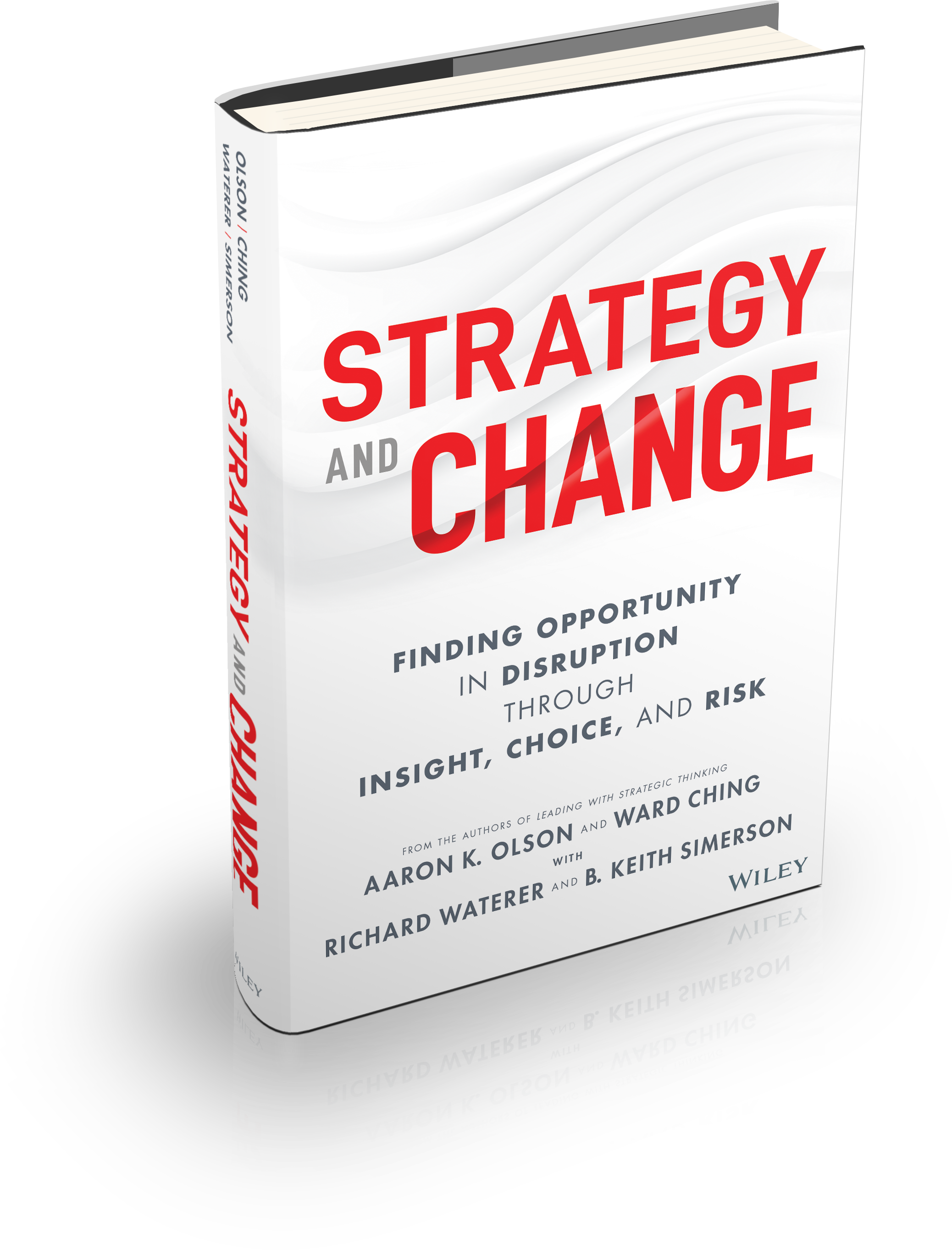Insight, Choice, and Risk
An excerpt from the new book Strategy and Change, coming September 2025
Organizations that master the core competencies of strategic leadership can successfully navigate disruptive events like Covid-19 and the emerging potential of AI. They gain early insight on potential shifts in the environment, they have established practices and venues to make decisions, and they are prepared to weigh and manage relevant risks.
In addition, the best organizations are also looking ahead. In our modern context, that means they are considering the likely implications of the two emerging shifts:
Disruptive Innovation is driving persistent Disruptive Change. While disruptive technology has always created fundamental shifts in society and markets, today we experience these fundamental changes more frequently. The frequency and speed with which these disruptive changes take place creates new challenges.
The Decision Ecosystem itself is evolving. Increasingly, technology is automating various components of this ecosystem. While some implications of this shift are evident, many are not. This introduces new possibilities, like the risk that unintended consequences surface quickly and scale rapidly.
Importantly, these challenges can and will emerge both outside and inside an organization. Externally, changes in the environment can come quickly and require fast action. This opens the door for challenges inside an organization. The actions required in response to any single disruptive change in the environment can be taxing. Taking on multiple actions, whether in sequence or in parallel, can quickly scale in complexity.
Even as the last several years have created challenges, technology has introduced new opportunities. Organizations are developing insight in new ways, building on leaps forward in both the science of cognition and the development of artificial intelligence. The decision sciences and information technology have introduced new ways to understand and evaluate choices and opportunities. At the same time, risk has gained attention due to the need for more sophisticated understanding of challenges like catastrophic weather and supply chain disruption.
Informed by these core competencies and with these shifts in mind, we will now dive deeper into the three key practices we see as critical to success:
Insight –recognizing trends and patterns, particularly where others do not;
Choice – identifying options and making decisions in an increasingly dynamic world;
Risk – finding the right balance between risk and opportunity amid heightened volatility.
We’ll focus on the art and science of each key practice, set in the context of the decision ecosystem (see Figure 3.3). We’ll also look at how these key practices are evolving, as automation and speed drive fundamental change to the decision ecosystem itself.
Figure 3.3: Insight, Choice and Risk within the Decision Ecosystem
Each chapter of our book is a “lens” on one of these key practices. For each lens, we will review the latest academic literature. We will use “case-in-point” examples to highlight how leading thinking applies in real world situations. We’ll conclude every chapter with practical actions that organizations can take along with key questions to consider.

